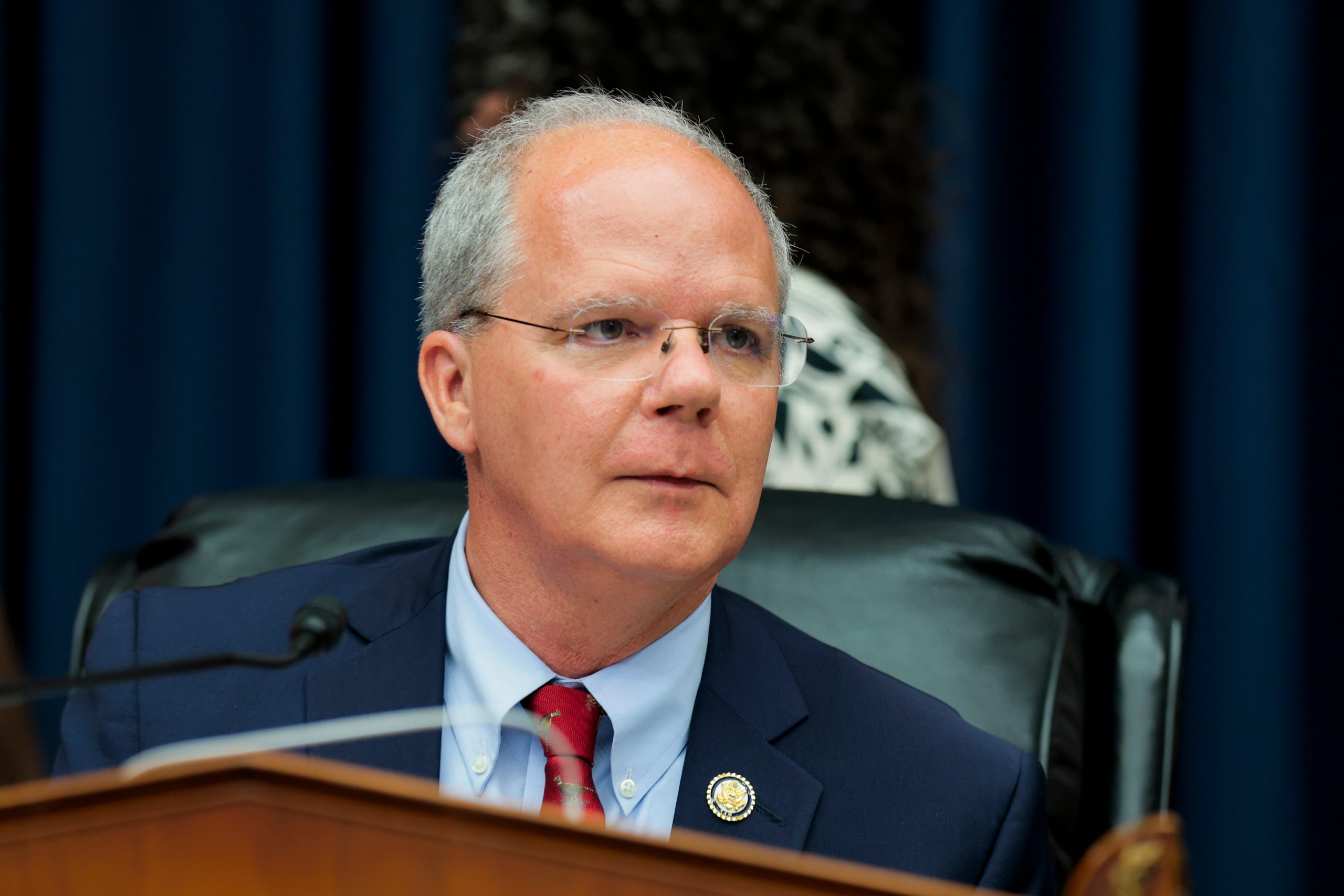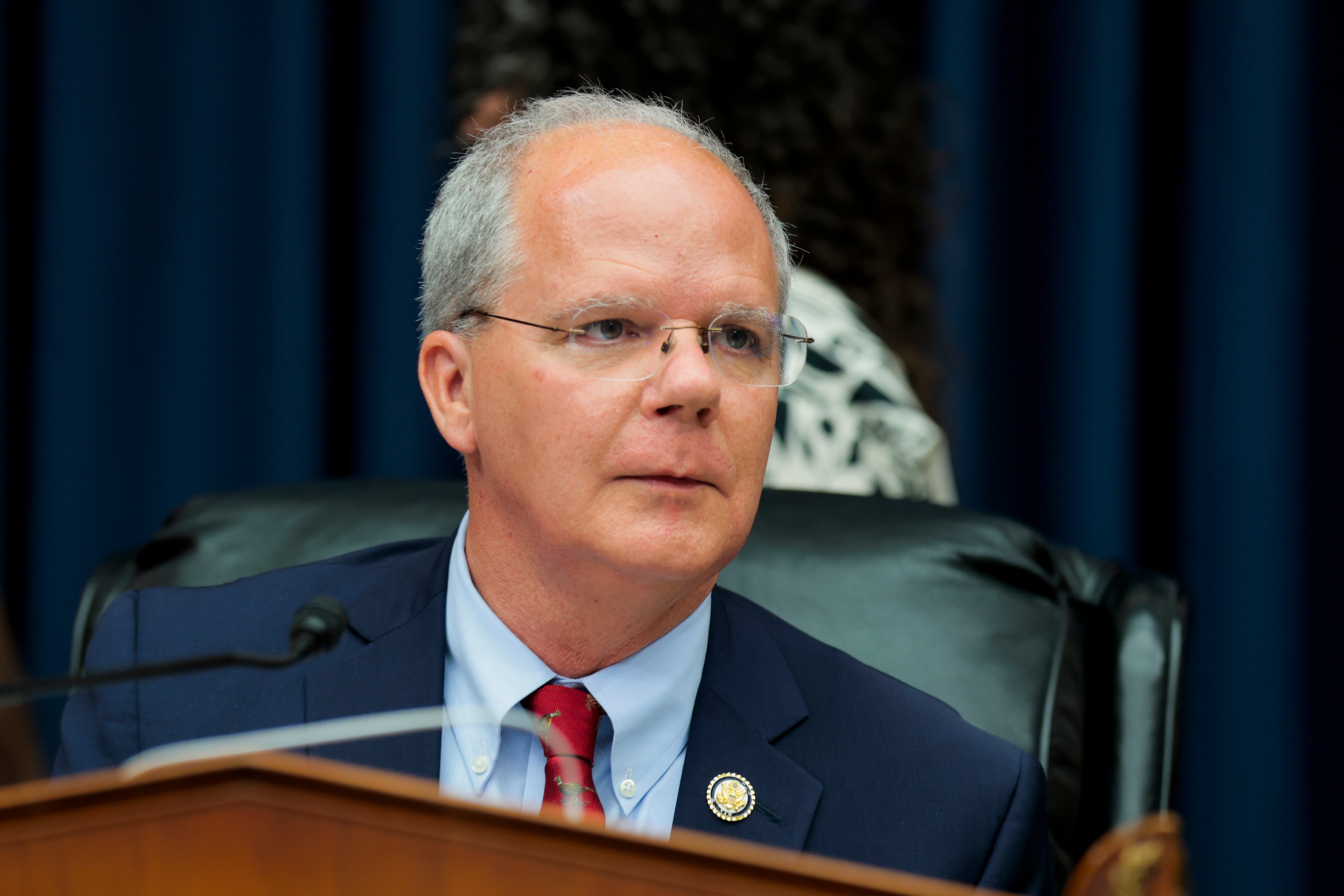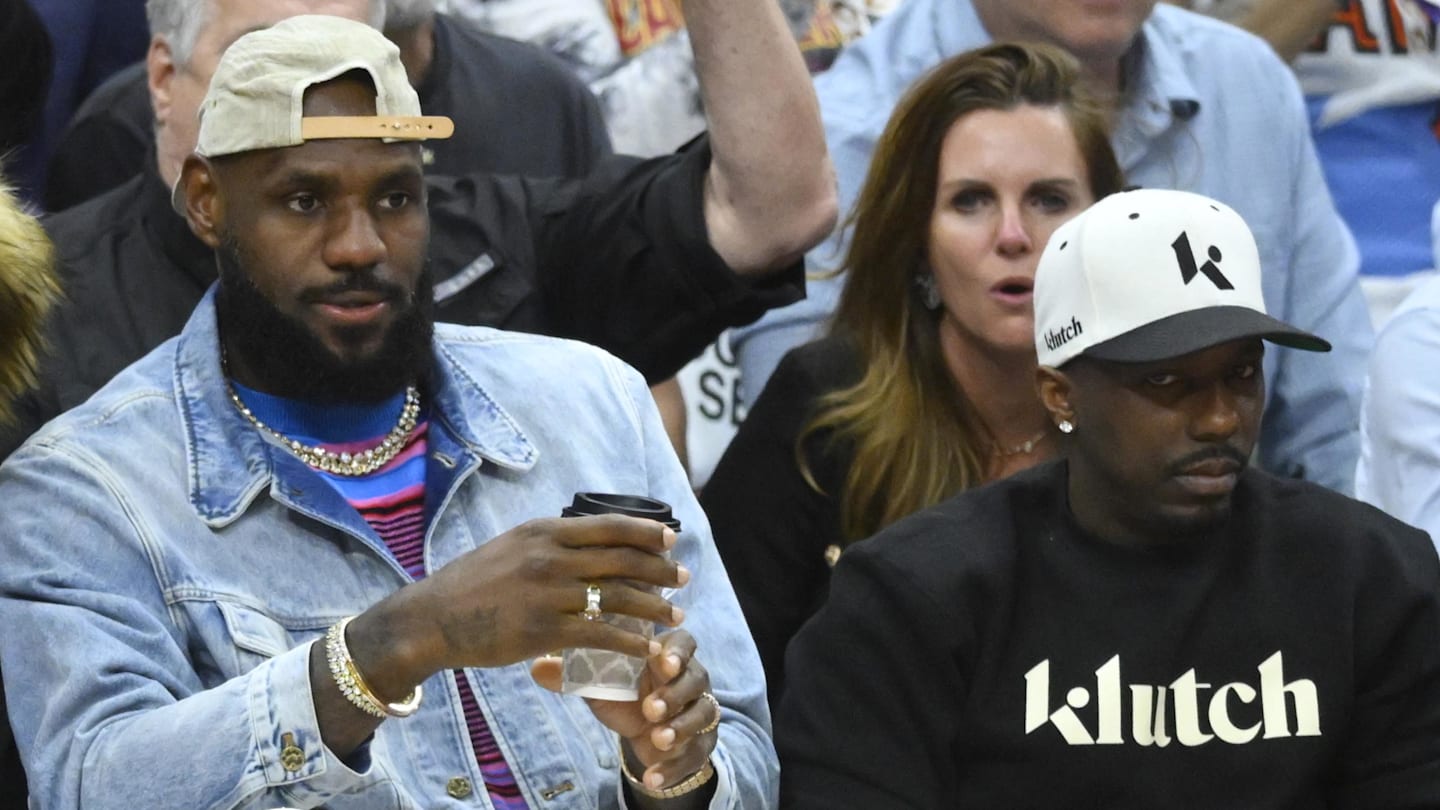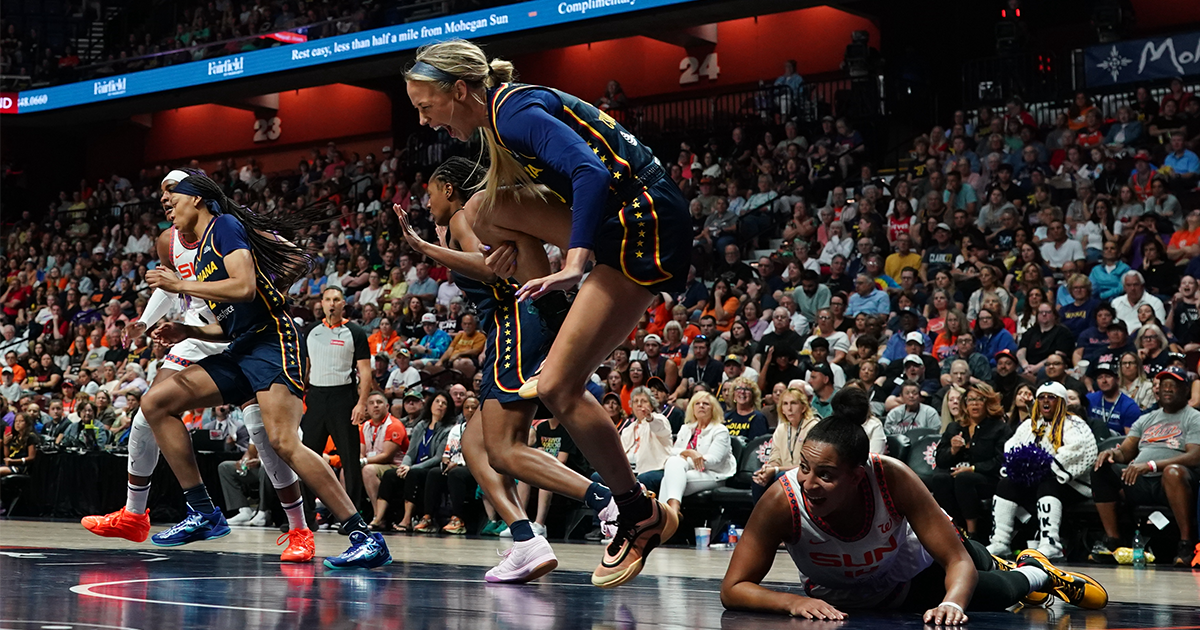NIL
NCAA Considering Changes To College Baseball Transfer Portal Window
Image credit: (Photo by Jay Biggerstaff/Getty Images) A handful of college baseball’s most influential voices gathered Thursday beneath bright lights and in front of cameras as they do every year roughly 24 hours before the start of the College World Series to discuss the latest developments in the game and across the NCAA landscape. Their […]

![]()

Image credit:
(Photo by Jay Biggerstaff/Getty Images)
A handful of college baseball’s most influential voices gathered Thursday beneath bright lights and in front of cameras as they do every year roughly 24 hours before the start of the College World Series to discuss the latest developments in the game and across the NCAA landscape.
Their message at this time last year was simple: College baseball had achieved new heights. Its popularity soaring, the caliber of talent on display earning monumental praise.
“College baseball, in my opinion,” said American Baseball Coaches Association executive director Craig Keilitz on the eve of the 2024 College World Series, “has never been better.”
That same optimism echoed again Thursday afternoon, nearly a year to the day later, at the annual ‘State of College Baseball’ press conference at Omaha’s Charles Schwab Field before the start of 2025 CWS on Friday.
The game is still more watched than ever. Its parity is thriving. And its best players continue to transform rapidly into major league talent.
But, this year, a cloud hovered over the celebration.
College baseball may still be in its golden era, but now, it’s navigating a legal and logistical minefield in the wake of the landmark House v. NCAA settlement.
Among the biggest changes: Beginning this fall, teams can increase their scholarship totals to a maximum of 34, more than doubling the maligned 11.7 limit.
For a sport that has long wrestled with roster inequities, the rule change could be revolutionary. But it also introduces a host of unanswered questions—and, potentially, unintended consequences.
Wealthier programs can now fully fund 34 scholarships, while others may struggle to approach that number, and some will hover around or below 11.7. In theory, the change promotes equity. In practice, it may deepen the gap between haves and have-nots.
“We’re nervous and ecstatic at the same time,” Keilitz said Thursday. “We fought to get a couple more scholarships, to possibly have 15 someday. And now to go to 34 maximum is incredible. But there’s some things that have to happen along with that.”
Among the questions that still need answering:
What’s coming isn’t just a numbers game—it could determine careers. Players who believed they had roster security may find themselves suddenly without a spot, victims of an evolving rulebook no one fully understands yet.
“I don’t think the schools know what they’re going to offer right now,” Keilitz said. “As they work through this, they’re trying to figure it out.”
One of the most pressing uncertainties surrounds the fate of players cut under the new limits.
Judge Claudia Wilken, who presided over the House case, recommended a “grandfathering” system allowing affected players to remain at their current school or transfer without counting against scholarship limits.
According to NCAA senior vice president of championships Anthony Holman, that proposal is gaining traction and should pass into legislation following a vote later this summer.
“The board still has to adopt that for our legislation,” Holman told Baseball America. “I think that’s a reasonable request, though. Our institutions seem to be open to good-faith efforts to say, ‘Hey, if there wasn’t a limit, Johnny, Jimmy and Paul would be on our roster. So, if they go somewhere else, they shouldn’t count against the number there, or if they stay here, same thing.’”
Whether there will be a limit on how many players a school can retain under those exceptions remains unknown.
“I don’t anticipate there will be (a limit),” Holman said, noting that restrictions could prove unnecessary given how many players might volunteer to stay on a stuffed roster.
Despite the haze, Keilitz urged programs to embrace the moment rather than fear it, echoing a message he first shared at the ABCA convention in January.
“We’ve got some incredible opportunities right now,” he said. “It’s up to us—all the ADs, the commissioners, certainly the NCAA and the law firms involved—to make it work.”
While college baseball’s profile has never been stronger, its infrastructure remains unsettled.
“It’s definitely a moving target,” Jay Artigues, chair of the Division I Baseball Committee, said. “But just embrace it and figure it out.”
Fixing The Transfer Portal Calendar
Perhaps the most pressing short-term concern is the chaos created by the overlap between the NCAA Tournament and the opening of the baseball transfer portal.
In what’s become an annual ritual of dysfunction, coaches are juggling roster calls from hotel lobbies and scouting meetings between portal pings.
Asked whether there had been thought about moving the portal window to the end of the season so that coaches could play out the entire season before having to think about moving their entire rosters, Holman’s response was direct and hopeful: The NCAA is actively working on it.
“There’s oversight committees for each sport and they may establish their own [windows],” Holman said. “That probably makes the most sense.”
Artigues was also on board.
“Years ago, the draft was going on during the College World Series and that was changed,” he said. “Yes, I do think that’s something to look into soon.”
It’s a seemingly simple fix, and one that has the potential to ease the burden on players and coaches alike during the sport’s most sacred stretch.
NCAA Tournament Expansion
If there was one theme that drew consensus on Thursday, it was a widespread interest in seeing the NCAA Tournament field expand beyond its current 64-team format.
But enthusiasm hasn’t translated into concrete plans. At least not yet.
“You are asking if we should expand the field,” Artigues said. “There’s always discussion about that.”
Artigues, who has roots in mid-major baseball as Southeastern Louisiana’s former head coach and current athletic director, offered his personal support.
“I love expanding it coming from a mid-major school,” he said. “If you see the success of the Murray States and some other mid-majors, it shows they can play with the big boys.”
But while the heart may say yes, the wallet—and the calendar—often say no.
“I don’t know what the value proposition is to that,” Holman said. “We lose money on regionals. The proposition of not garnering additional revenue and just adding expenses, in this day’s economic landscape, doesn’t make a whole lot of business sense.”
Keilitz echoed that dilemma.
“It’s like a great restaurant,” he said. “They expand, and then all of a sudden things fall apart on them. That’s something we always need to be very cognizant of.”
Still, the belief remains that plenty of deserving teams are being left out under the current system. It’s a reality that was reflected in this year’s field, which omitted Xavier and Connecticut, both of which had resumes that historically pointed to tournament inclusion.
This year’s results only added fuel to the debate: Four No. 4 seeds won opening games, and Murray State stormed into Omaha after dispatching Ole Miss and Duke. The argument for broader access has rarely felt stronger.
But the question, for now, is whether inclusion is worth the risk of altering a tournament structure that has become one of college sports’ most compelling.
“Anytime you add something to it, you run the risk of, to Craig’s point, messing up the recipe a little bit,” Holman said. “We’ve got a very robust championship. Our broadcast partners do a tremendous job. We’re fortunate to have the coverage that we have.”
A Path Forward
Despite the complications, this year’s College World Series offers plenty of reasons for optimism.
The field includes six conferences and an independent. No returners, no traditional powers and a team like Murray State, whose run through the Oxford Regional and Durham Super Regional captured the spirit of postseason chaos.
“This is a great example of young people playing for the name on the front of the jersey,” Holman said. “Money doesn’t always drive competition.”
Parity is alive. Passion is evident. And in spite of looming structural changes, college baseball’s stewards seem committed to preserving—and enhancing—a product that has never been more popular.
“I’m an internal optimist,” Keilitz said. “Now we are where we are and we need to make it work. And I’m bullish that we can make it work.”
NIL
Big money, same old powerhouses as favorites
The first includes college football’s biggest brands, which are dominating the list of favorites once again: No. 1 Texas, No. 2 Penn State, No. 3 Ohio State, and No. 4 Clemson. Second are teams we’ve talked about over the past few decades that are using money and celebrity coaches to elbow their way into the […]

The first includes college football’s biggest brands, which are dominating the list of favorites once again: No. 1 Texas, No. 2 Penn State, No. 3 Ohio State, and No. 4 Clemson.
Second are teams we’ve talked about over the past few decades that are using money and celebrity coaches to elbow their way into the conversation: Colorado, North Carolina, and No. 23 Texas Tech.
And then there are those who see the second year of the 12-team playoff and a different playing field created by revenue sharing and think they might be able to fashion a turnaround not unlike No. 20 Indiana’s worst to (almost) first resurgence last year: Pick a name, any name, but a good starting point might be UCLA (now with star QB Nico Iamaleava ) or Virginia (which, like Indiana last year, avoids pretty much every top team on its conference schedule).
Jeffrey Kessler, the attorney who helped broker the massive legal settlement that compelled virtually all schools eligible for the playoff to share millions with their athletes, says these times remind him of the early 1990s, when the NFL introduced unrestricted free agency and the salary cap.
“It’s a big change,” Kessler said. “But I think the system will adapt and the better-managed athletic departments will do well, as they always do. And athletic departments that are poorly managed won’t do so well, and probably didn’t do so well in the old system, either.”
Heisman watch equals title watch
Pay or no pay, one thing hasn’t changed in college football or any sport: Great players win games.
It’s no big surprise, then, to see Texas at the top of almost everyone’s watch list. Leading the Longhorns is none other than Arch Manning, the sophomore quarterback with the reported $6 million-plus NIL deal, and the latest burgeoning star in a family that has produced lots of them, from Archie to Peyton to Eli.
“For Arch, he grew up in this era of seeing high-level football,” Texas coach Steve Sarkisian said. “He’s watched Super Bowls. He’s watched gold jackets getting put on. He’s been to playoff games. He’s been recruited at the highest level as the No. 1 player in the country.”

Though it doesn’t always work out, there are plenty of schools where a player with hopes of winning the Heisman Trophy also will have a legitimate chance to win the CFP.
Besides Manning, other favorites include receiver Jeremiah Smith, whose success with defending champion Ohio State figures to depend a lot on whether the Buckeyes’ next quarterback, Julian Sayin, who is also in the Heisman mix, is as good as advertised.
Clemson QB Cade Klubnik is among the favorites, as are the Tigers for a repeat title in the ACC.
Quarterback Drew Allar is in his fourth season at Penn State, where the Nittany Lions are expected to face Ohio State for the Big Ten title (They play Nov. 1, and coach James Franklin is 1-10 against the Buckeyes).
Meanwhile, LSU appears to be only a secondary threat to Texas as Georgia and Alabama are in the SEC, but Garrett Nussmeier is in that Heisman mix and can stay there with a good performance against Klubnik and Clemson on Aug. 30.
Is the hype machine same as the win machine?
Nobody has defined this new era of NIL as much as Colorado coach Deion Sanders.
Sanders brought his unapologetic swagger to a program that had been in the dumps for decades. He made the Buffaloes relevant, producing TV ratings, celebrity sightings, a Heisman winner in Travis Hunter, and maybe the most talked-about player in the sport in his own son, Shedeur, whose tumble to the fifth round of the NFL draft said as much about his talent as the football-loving public’s reaction to a new era in which players hold more power.
Winning? That was another thing. Deion Sanders is 13-12 over his two seasons, and now that Hunter and Shedeur are gone, the only big expectations for CU are coming from Boulder.
“The next phase is we’re going to win differently, but we’re going to win,” Sanders said.
Another celebrity coach, Bill Belichick, will start answering the question of whether fans and wins will follow him to North Carolina, a school where the excitement often doesn’t ramp up until basketball season.
The 73-year-old coach said he was building an NFL-style program — meaning everything he does, from nutrition to training to, yes, contracts, will look more like the pros. It was the sort of notion that used to be spoken softly but can now be used as a selling point.
“Everything we do here is predicated on building a pro team,” said Carolina’s new general manager, Mike Lombardi, who worked with Belichick in the pros. “We consider ourselves the 33rd [NFL] team because everybody who’s involved with our program has had some form or aspect in pro football.”
Over in Lubbock, Texas, the Texas Tech athletic program has never been afraid to swing big.
The program that gave us swashbuckling coach Mike Leach and Super Bowl quarterback Patrick Mahomes is being bankrolled by the billionaire head of its board of regents, Cody Campbell, who now has the school’s football field named after him.
Texas Tech has made a series of high-profile and expensive player signings — some for high schoolers who haven’t arrived yet — and is estimated to be spending more on NIL than any program in the country besides Texas.
“I know there’s a lot of expectations on this team,” said coach Joey McGuire, who is coming off an 8-5 season. “We look at it as opportunities.”
The new world of revenue sharing and an expanded playoff does give more reason for hope across the country.
When searching for blueprints of how that can work, most long-suffering programs will look to Indiana.
The Hoosiers were an also-ran for decades, with one Rose Bowl appearance ever and one winning record in a non-COVID-19 season since 1995. Then coach Curt Cignetti arrived, brought 54 new players from the transfer portal and turned Indiana into a winner overnight.
It was a remarkable turnaround that ran counter to the realities seen in these stats:
⋅ There are 70 teams that make up the Power Four conferences, plus Pac-12 leftovers Oregon State and Washington State.
⋅ Since 2000, 36 of those teams have captured a total of 137 outright or shared league titles that have been won between the five largest conferences.
⋅ Of those 137 titles, 92 (67 percent) have been captured by 10 programs that have won five or more. The other 26 have combined to win 45.
⋅ That leaves 34 programs (48.5 percent) that haven’t won any. In the NFL over the same period, only 10 teams (31 percent) have failed to reach the Super Bowl.
Those numbers reflect how hard it is to break through in big-time college football but also the size of the glass ceiling that could be shattered in this new era of college sports.
“I think the rev-share world definitely has a chance to bring things to a more balanced circumstance,” said Purdue athletic director Mike Bobinksi, whose football program has a new coach, Barry Odom, after going 1-11 last season. “Will there always be some programs that operate in a little bit of a different reality? Of course. But we’re not concerned about that, nor are we crying in our beer about that. We’ve just got to find a way.”
NIL
LeBron's agent calls for key agreement within NIL contracts amid transfer portal chaos
Acclaimed sports agent Rich Paul seems to believe that one significant addition should me made to Name, Image and Likeness deals in college sports, as programs continue to deal with major roster attrition due to the transfer portal each year. Paul is the owner and operator of Klutch Sports Group, which represents NBA all-time points […]



Acclaimed sports agent Rich Paul seems to believe that one significant addition should me made to Name, Image and Likeness deals in college sports, as programs continue to deal with major roster attrition due to the transfer portal each year.
Paul is the owner and operator of Klutch Sports Group, which represents NBA all-time points leader LeBron James (Los Angeles Lakers), along with a plethora of other stars like Anthony Davis (Dallas Mavericks) and Draymond Green (Golden State Warriors), among others in major American professional sports.
College athletics is taking the shape of the professional model that Paul has found success with. But the ever-evolving NIL era is missing a “contractual agreement” where there is an obligation on the student athlete’s part, according to Paul.
As it stands, college players can transfer at will and are not bound to a school despite being signed to an NIL contract. Schools have attempted to push back on the issue in court without success, allowing players under contract to transfer without penalty.
“I think NIL should come with a contractual agreement,” Paul said via the Sports Business Journal. “The negative perception and behavior within the transfer portal and things like that – If we’re going to have student athletes get paid – we should teach them the proper way and the obligations that actually come with getting paid.”
“If you sign with Ohio State, for that matter, and you sign an NIL deal for $3 million, then that should come with a term, two years, three years or whatever the case may be,” Paul continued. “But that way, you’re not signing with Ohio State for $3 million this year, and then you’re going to TCU for $4 million next year, because that’s going to hurt the purity of the game.”
Transfer portal regulation could be around the corner, as the NIL space continues to change seemingly each year. But, for a college player to be obligated to one institution, athletes would likely need to be classified as employees, something that doesn’t appear to be an option for the NCAA and College Sports Commission due to the potential for unionization.
NIL
College football 2025: What you need to know about the new season
College football stayed very much in the news throughout the offseason, with details emerging almost weekly about changes in the… College football stayed very much in the news throughout the offseason, with details emerging almost weekly about changes in the way the sport works, both on and off the field. With the kickoff of the […]

College football stayed very much in the news throughout the offseason, with details emerging almost weekly about changes in the…
College football stayed very much in the news throughout the offseason, with details emerging almost weekly about changes in the way the sport works, both on and off the field.
With the kickoff of the 2025 campaign less than a week away, here’s a quick cheat sheet on all that’s changed (and also what hasn’t):
How come players are getting paid now?
This has been developing for decades. It’s rooted in a handful of lawsuits in which players sued to be able to profit from their name, image and likenesses — say, for instance, on the covers of a video game or the back of a team jerseys.
Starting this season, the schools themselves will be able to pay the players directly for using their NIL, which further blurs the line between amateur and professionalism.
What still isn’t allowed is “pay for play” — where a school simply signs a player to play for them — though many people argue these NIL deals are simply pay for play in disguise under the term “revenue sharing.”
There have been, however, persistent calls for players to be treated more like employees — for instance, through collective bargaining — and that figures to be the next big debate to play out.
How much money do the players make? And who pays?
Contracts range from several million dollars for top quarterbacks such as Arch Manning of Texas to four-digit deals for players far down on the depth chart.
Schools are allowed to share 22% of a portion of their revenue this school year, which amounts to $20.5 million that has to be split among all sports, but mostly goes to football and men’s basketball.
Who pays? Well, often it’s us, the fans, one way or another. Some schools are increasing the cost of tickets and ticket licenses; others are upping concession prices and a few more have added athletic surcharges to tuition bills.
Most every big school has been hitting up boosters to fill in the gaps that the $20.5 million and added scholarship costs will create. Some sports departments are getting extra funding from government.
Did Deion Sanders stay at Colorado?
He did. Though there was speculation wide and far that Sanders might follow his sons Shedeur and Shilo out the door after two years, the coach insisted he was with the Buffs for the long-haul. Just as preseason camp was warming up, Sanders disclosed he’d been diagnosed with bladder cancer, which he said had been treated.
“I’m healthy, I’m vibrant,” Sanders said.
His team? Who knows? Replacing a star quarterback and a Heisman Trophy winner in Travis Hunter is never a sure thing. The over/under on the CU win total this year is 6.5 according to the MGM Sportsbook.
Why is Bill Belichick coaching in college?
The 73-year-old, six-time Super Bowl winner with the New England Patriots said he was looking for a new challenge and a place to build a program the way he wanted, instead of the way NFL teams he interviewed with were telling him.
He also cited the close connection he had to his new school, North Carolina, where his father served as an assistant coach in the 1950s.
What about Alabama?
The Crimson Tide’s four losses in coach Kalen DeBoer’s first season were the most since Nick Saban’s debut in 2007. The Tide’s hopes for a turnaround rest on quarterback Ty Simpson, who won the starting job this month after sitting on the sideline for his first three seasons in Tuscaloosa.
Simpson is a rarity — a five-star recruit who didn’t bail on his school in search of more playing time and potentially more money.
Alabama’s opener is Aug. 30 at Florida State.
When do the games start?
Things kick off Saturday, with Big 12 rivals Kansas State and Iowa State meeting in Ireland. Big games next weekend include No. 1 Texas at No. 3 Ohio State, No. 9 LSU at No. 4 Clemson and No. 6 Notre Dame at No. 10 Miami.
Anything new about the College Football Playoff?
This is the second year of the 12-team playoff. There will be four rounds of games, starting Dec. 19 and ending exactly a month later at Hard Rock Stadium near Miami.
The five best conference champions will earn automatic bids into the tournament, but in a tweak from last year, the four best among them will not be guaranteed a top-four seed and a first-round bye. Instead, they’ll be slotted in by how the 13-person selection committee ranks them.
So, for instance, if Texas and Alabama are CFP No. 1 and 2 heading into the SEC title game and Texas wins a close one, but Alabama only falls to No. 4, the Tide would still get the 4 seed and a first-round bye.
How to keep track of who’s good and not good
After Labor Day, the AP releases its weekly Top 25 poll every Sunday. The CFP selection committee starts releasing its weekly rankings the first week of November. Its last poll, on Dec. 8, will slot the teams into the playoff bracket.
___
Get poll alerts and updates on the AP Top 25 throughout the season. Sign up here. AP college football: https://apnews.com/hub/ap-top-25-college-football-poll and https://apnews.com/hub/college-football
Copyright
© 2025 The Associated Press. All rights reserved. This material may not be published, broadcast, written or redistributed.
NIL
Sophie Cunningham injury: Indiana star celebrates Kelsey Mitchell, Fever win after scary collision
Even when she’s not contributing on the floor, Sophie Cunningham is celebrating her team’s success. After Cunningham left the Fever’s game against the Connecticut Sun on Sunday with an apparent knee injury, things looked dire for Indiana. The team was down 28-13 at the time of Cunningham’s injury and trailed heavily a substantial portion of […]

Even when she’s not contributing on the floor, Sophie Cunningham is celebrating her team’s success. After Cunningham left the Fever’s game against the Connecticut Sun on Sunday with an apparent knee injury, things looked dire for Indiana.
The team was down 28-13 at the time of Cunningham’s injury and trailed heavily a substantial portion of the game. Alas, the Fever didn’t give up, rallying back to force overtime and eventually pulling out a 99-93 victory. After the game, Cunningham posted a three-word tweet to celebrate her teammate’s comeback win: “KELSEY FREAKIN MITCHELL.”
In the win, Kelsey Mitchell exploded for 38 points and six assists while shooting 11-22 from the field and 5-8 from beyond the arc. Mitchell has been spectacular this season, leading the team with a career-best 19.9 points per game.
With the performance on Sunday, Mitchell passed Tamika Catchings for the most career games with 30+ points in franchise history with 11. It wasn’t the only piece of history made Sunday. The comeback win was also the largest in Fever history.
As exciting as the Fever’s jaw-dropping win was, it’s difficult for Indiana to fully enjoy the moment. Cunningham wasn’t able to return to the game on Sunday and could miss extended time with the injury. It’d be a serious hit to the Fever’s playoff hopes.
After all, Cunningham has been spectacular this season. The Missouri product is averaging 8.9 points, 3.6 rebounds and 1.2 assists per game while shooting 47.7% from the field and 44.3% from beyond the arc.
Cunningham’s injury occurred when Sun guard Bria Hartley crashed into her on a drive to the basket. Hartley seemingly fell onto the lower part of Cunningham’s leg, causing the Fever forward to hobble away on one leg while clutching her injured knee.
Cunningham isn’t the only player battling an injury on the Fever. Superstar guard Caitlin Clark has been out with a groin injury since July 15, and has missed 22 total games this season due to injury.
On Sunday, Fever head coach Stephanie White said the team hopes for Clark to return before the end of the regular season. However, if she’s unable to, and Cunningham is sidelined, the Fever could be in dire straits.
Sophie Cunningham is scheduled to undergo an MRI on Monday, per Scott Agness. The Fever will take the court next on Friday against the Minnesota Lynx at 7:30 p.m. ET. The game will air live on ION.
NIL
Mark Pope wants to tighten and move transfer portal window to after NCAA Tournament
Mark Pope is a huge advocate for extending the college basketball season to 40 games, but that’s not the only major change in the sport he’s suggesting. The Kentucky head coach also has thoughts on the current state of the transfer portal. “If I could change (the transfer portal), I would probably move it to […]

Mark Pope is a huge advocate for extending the college basketball season to 40 games, but that’s not the only major change in the sport he’s suggesting. The Kentucky head coach also has thoughts on the current state of the transfer portal.
“If I could change (the transfer portal), I would probably move it to the day after the national championship game and make it a really tight window, make it a five-day window,” Pope said this week on the Eye on College Basketball with Matt Norlander. “That way, everyone has had time to evaluate, everyone has had time to see it, and just make it a shorter window so that we can just get through the process. The process is already crazy fast.
“But I say that also acknowledging that that answer raises a lot of issues too. There’s no perfect answer.”
During the 2024-25 season, the transfer portal opened up after the first weekend of the 2025 NCAA Tournament wrapped up — a one-week bump back from the previous season. It officially opened for business on March 24 and stayed open for 30 days before closing on April 22. This is just the entry window, though, not a deadline for making commitments. But it forced coaches and would-be transfers to make decisions while the season was still being played. It’s challenging to balance coaching and recruiting during the most important stretch of the season.
“The worst thing was playing in the NCAA Tournament while the portal was open. I probably mismanaged that last year, in all honesty,” Pope admitted.
We likely won’t ever know exactly what Pope “mismanaged” about the portal this offseason, but Kentucky was still able to land Tulane transfer Kam Williams on the morning of the Wildcats’ Sweet 16 showdown against Tennessee, a game UK lost in blowout fashion. Pope added that coaching in today’s game demands going as fast as possible down multiple roads, but that he didn’t do well enough of making it happen in the spring.
“That’s something that we’ve talked in great detail about how we’re going to remedy next year,” he said.
But much like how his returning players are expected to take a leap in 2025-26 after gaining a year of experience at Kentucky, the same will be true for Pope as a head coach. Last offseason, he was starting from scratch. But this offseason, there were a dozen Quad 1 wins, a pair of NBA Draft picks, and the first second NCAA Tournament weekend since 2019 under his belt to work with.
“One benefit for us was we had been here and won,” Pope said of navigating the portal this offseason. “So that’s the big thing we didn’t have coming in the first year. Guys were kinda saying like ‘What is Kentucky going to look like?’ I mean you just had one of the great all-time coaches in the history of the game vacate this seat and you brought in me, right? So there was that question. I don’t think we had to deal with that question at all this year. Everybody had seen us play and see what our guys did.”
All of that banked-up clout allowed Pope to rebuild Kentucky’s roster through the portal and turn the ‘Cats into a potential title contender in 2025-26 — and that was with some self-reported missteps along the way.
Join KSR Plus! With a KSR Plus membership, you get access to bonus content and KSBoard, KSR’s message board, to chat with fellow Cats fans and get exclusive scoop.
NIL
LaNorris Sellers Flaunts NIL Wealth With $185K Mercedes-Benz
iStockphoto / © Jeff Blake-Imagn Images Audio By Carbonatix South Carolina football star LaNorris Sellers is gearing up for his sophomore season in Columbia. The quarterback is hoping to build upon a phenomenal debut as the Gamecocks’ starter under center. That production as a redshirt freshman has him in Heisman trophy conversations ahead of the […]


iStockphoto / © Jeff Blake-Imagn Images

Audio By Carbonatix
South Carolina football star LaNorris Sellers is gearing up for his sophomore season in Columbia. The quarterback is hoping to build upon a phenomenal debut as the Gamecocks’ starter under center.
That production as a redshirt freshman has him in Heisman trophy conversations ahead of the 2025 college football season. It’s also resulted in a notable boost in NIL income.
Last year, Sellers guided the Gamecocks to a 9-3 output with wins over the likes of Clemson, Missouri, and Oklahoma. He threw for 2,500 yards and 18 scores while adding another 674 yards on the ground.
He hopes to build on his success this fall. Excitement surrounding his expected growth has those in the area eager to watch.
The LaNorris Sellers hype is real.
The signal caller burst onto the scene as a relative unknown in 2024. He’s now being mentioned as a potential top 10 NFL Draft pick in the 2026 selection process.
“When you see him at his best, he’s unstoppable. He’s a great runner when he takes off. Strong arm. Built well. Can handle the physical beating he’s going to take at quarterback and shake off sacks. Moves around really well.”
-Steve Muench via The McShay Show
Sellers can sling it. He can run, too. At 6-foot-3 and 240 pounds, he’s impossible to bring down. His dual threat abilities gave opposing defenses nightmares last year.
Sellers is considered a top Heisman trophy contender this preseason and a future pro prospect. He’s now cashing in on his newfound fame.
The football star will have a new car on the South Carolina campus this fall.
Sellers will renew an NIL partnership with Dick Dyer & Associates. He posted a comical ad on social media to announce the agreement.
In that commercial, he flaunted the perks of his deal by showing off his new ride. He’ll drive a 2025 Mercedes-Benz G63 this season, valued at $186,100.
LaNorris Sellers spoke on NIL poachers this offseason. He and his father said they turned down millions to stick around in Columbia.
The passer stayed loyal to the Gamecocks. He believes he can have everything he needs at South Carolina.
This new deal certainly supports that outlook, as does his $3.7 million NIL valuation. Sellers will be riding in style on campus this year.
-

 Health2 weeks ago
Health2 weeks agoThe Women Driving A New Era In U.S. Ski & Snowboard
-

 NIL2 weeks ago
NIL2 weeks agoESPN Announces 'dont wait run fast' by mgk as New College Football Anthem for 2025
-

 Rec Sports2 weeks ago
Rec Sports2 weeks agoSwimming & Diving Comments on the Rules – 2025-26
-

 Rec Sports2 weeks ago
Rec Sports2 weeks agoSternberg named new youth center director | News, Sports, Jobs
-

 Technology2 weeks ago
Technology2 weeks agoAmid Sports Chaos, ‘Known’ Data and Outcomes Help Agency Win
-

 College Sports2 weeks ago
College Sports2 weeks agoRep. Pugh: The Red Sand Project brings awareness to ‘very serious issue’
-

 Youtube2 weeks ago
Youtube2 weeks ago🚨 BREAKING NEWS 🚨 Micah Parsons requests trade from the Dallas Cowboys | SportsCenter
-

 Motorsports2 days ago
Motorsports2 days agoNASCAR’s Bold Sponsorship Move: Anduril Steps into the Fast Lane as Defense Technology Meets Racing Dram
-

 Health6 days ago
Health6 days agoClinical psychologist discusses student
-

 High School Sports3 weeks ago
High School Sports3 weeks agoKentucky Basketball Offers 7
































